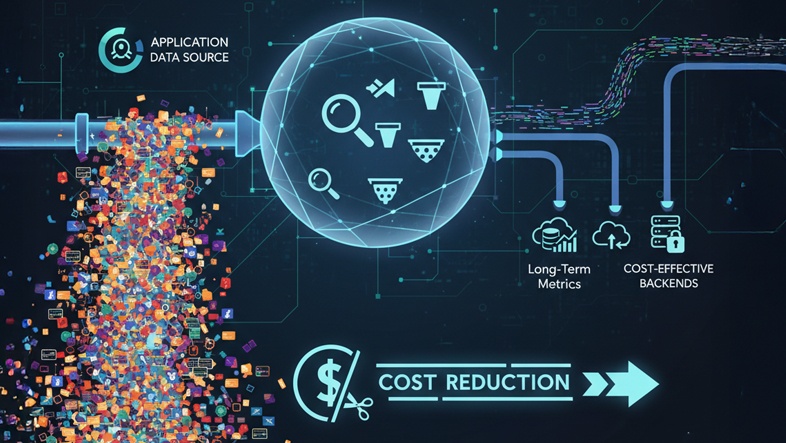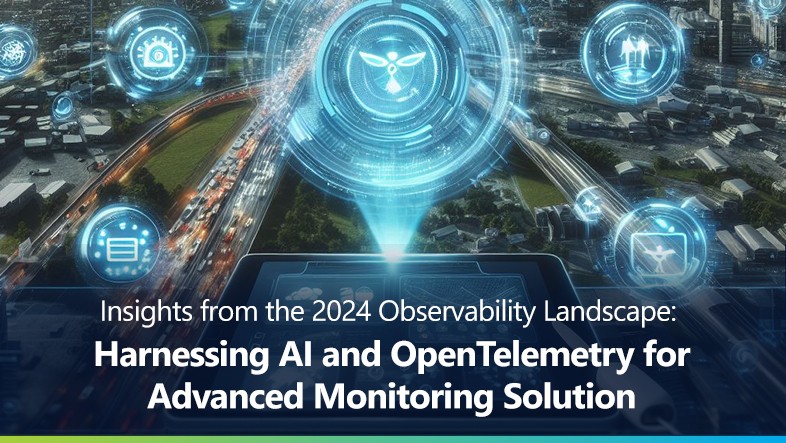

Table of Contents
Most organisations start observability with a clear intention. Get the right signals in place, build a few dashboards, and move on. But as systems scale, telemetry grows silently in the background. Before anyone notices, the monthly bill rises faster than the actual value teams are getting from it.
This is when the real questions begin. Are we collecting the right data or just collecting everything?
The problem is rarely the tools. It is usually the lack of control over what enters the pipeline. Logs, metrics and traces flow in without filters, rules or prioritisation. Over time, you end up storing more data than you analyse, and that creates unnecessary cost.
The good news is that this problem has a practical solution. The OpenTelemetry Collector gives you a way to take back control. It lets you shape, filter, sample and route telemetry before it reaches your backend. In this blog we will look at why observability costs rise, how the Collector is built to manage that, and five specific techniques that can help teams optimise cost without losing visibility.
Why observability costs rise so quickly
Modern infrastructure generates a large amount of telemetry. Containers, microservices, gateways, databases and queues all keep producing signals. Without conscious design, this turns into uncontrolled volume.
Some common issues include:
- Logs containing noise that no one reviews
- Traces are created for every request in high-traffic services
- Metrics with labels that create high cardinality
- All data is pushed to a single expensive backend
- No sampling strategy to manage peak traffic
- No transformation or filtering before ingestion
These behaviours lead to higher storage cost, slower queries and reduced signal quality. What teams need is not more telemetry, but better control over it.
The OpenTelemetry Collector is designed to provide that control
The official OpenTelemetry documentation defines the Collector as a component that can receive, process and export telemetry data. What makes it powerful is that the processing layer can apply logic before data reaches any backend.
The Collector allows teams to:
- Filter unneeded logs, metrics and spans
- Apply sampling rules
- Transform attributes for consistency and size reduction
- Route telemetry to different backends
- Enrich or clean data based on rules
- Standardise pipelines across applications
Applications continue to send full telemetry while the Collector decides what to keep, what to drop and where to send it. This creates a central control plane for optimising observability cost.
Five cost control techniques supported by official OTel features
- Tail based sampling
Sampling is a foundational method for reducing trace volume. Tail based sampling waits until a trace is complete and then decides whether to keep or drop it. Important traces like errors or high latency paths are retained while routine traces are reduced. This keeps trace quality high and storage efficient.
- Attribute filtering
The Collector supports processors that remove unnecessary attributes from logs, metrics and spans. Fields like user agent strings, verbose identifiers or noisy metadata can be removed before export. This reduces payload size and improves ingestion performance.
- High cardinality control
High cardinality in metrics creates large numbers of unique time series, which increases storage and slows down dashboards. The Collector can drop or modify such labels. This keeps metric systems lean and responsive.
- Multi backend routing
Not all telemetry needs to go to the same backend. The Collector allows routing based on rules. For example:
- Error logs go to your main observability platform
- Debug logs go to object storage
- Select traces go to APM while the rest are sampled out
Routing ensures high value signals use premium storage while low value data goes to cost efficient destinations.
- Redaction and transformation
The Collector supports processors that can redact sensitive fields and transform telemetry to maintain consistency. Clean and optimised data lowers downstream processing cost and improves governance.
How organisations typically deploy this
A simple and scalable pattern is commonly used in production:
- Agent collectors run on each node or service to collect signals locally.
- Gateway collectors sit centrally and apply filters, sampling rules and routing logic.
- The gateway exports only the required and optimised telemetry to one or more backends
This design allows cost control and governance without requiring changes in application code.
Final takeaway
Observability becomes expensive when teams collect everything without structure. The solution is not to reduce visibility but to gain control over the pipeline. The OpenTelemetry Collector provides exactly that control through filtering, sampling, transformation, and routing. With the right pipeline design, organisations can keep observability strong while managing data volume, storage cost, and backend load effectively.
Many engineering teams are now looking to bring this discipline into their observability strategy. If you are exploring how to structure your OpenTelemetry journey or want to build a cleaner and more cost-efficient pipeline, Ashnik can guide you with hands-on expertise across design, rollout, and ecosystem integration.




